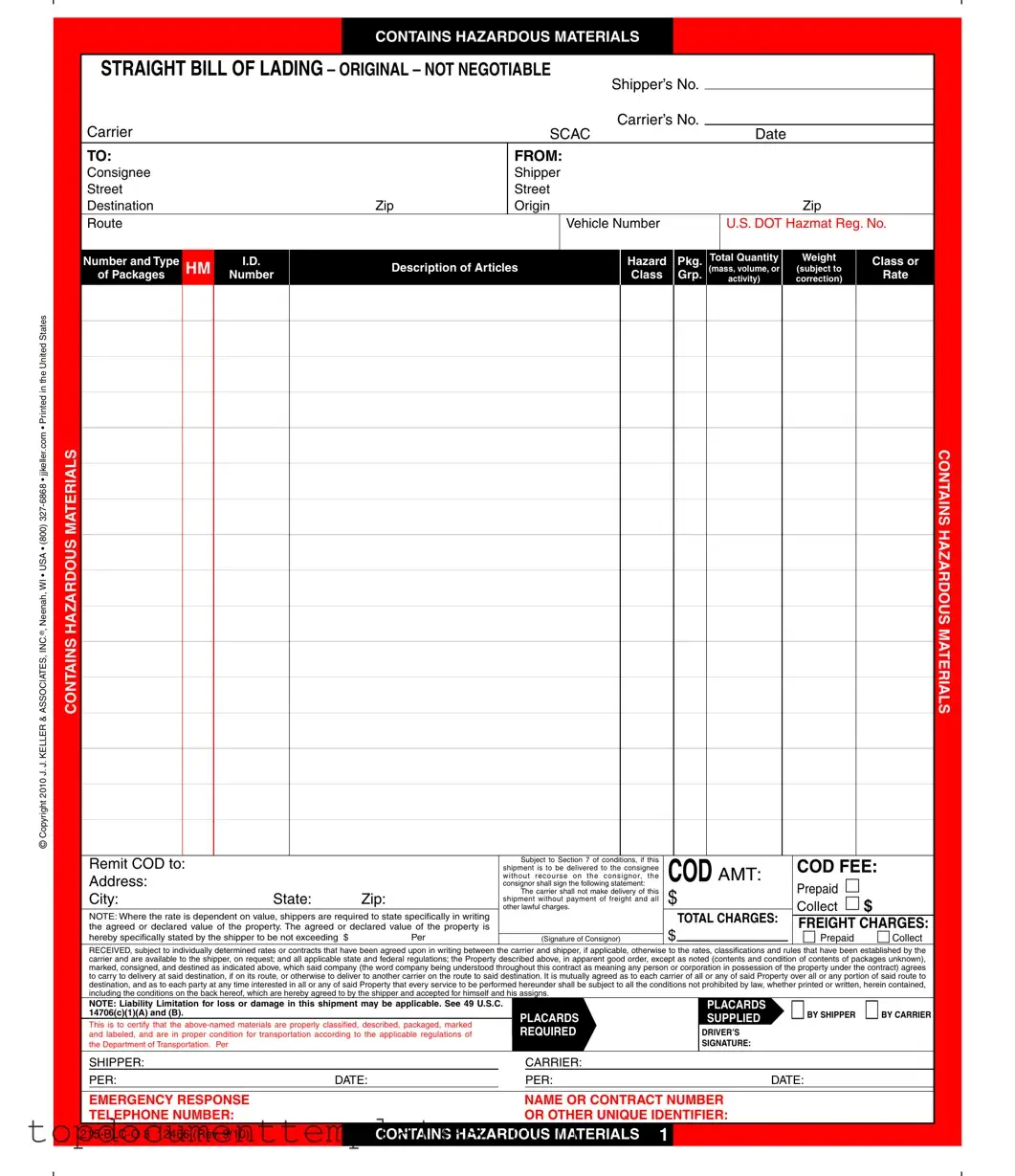Blank Hazard Bill Of Ladden PDF Form
The Hazard Bill of Lading is a crucial document used in the transportation of hazardous materials. It outlines the responsibilities of the shipper and carrier, ensuring that all parties are aware of the nature of the goods being transported and the regulations governing their shipment. Proper completion of this form is essential for compliance and safety, so please take a moment to fill it out by clicking the button below.
Open This Form
